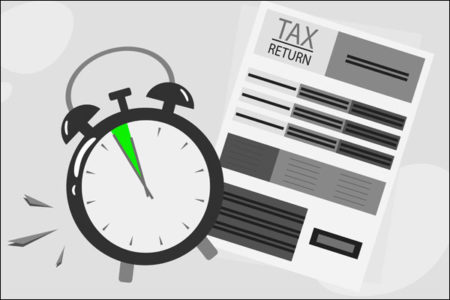
The first phase of the current tax season has ended. The flurry of activity to make sure that tax returns for 2021 are filed or, at least that the tax due is paid with the request for an extension, is done.
The Internal Revenue Service estimates that 15 million taxpayers requested an extension of time to file their 2021 tax return. An extension of time to file is not an extension of time to pay. Taxpayers must estimate their tax liability and pay any amount due by the April due date to avoid penalties and interest.
Filing a tax extension to file a tax return does not increase your risk of being audited, according to both the IRS and various tax professionals. Historically, it has been proven that individuals who earn $200,000 or more a year have a 3% greater chance of being audited. According to IRS data, the IRS audited 1% of people earning less than $200,000 and 4% of those earning more than $200,000.
Also, the chances of an audit appear to rise depending on parts of the tax return itself, such as if there is a Schedule C for self-employment income and whether it includes travel expenses, or whether large charitable deductions are adequately explained and presented in detail.
Individuals are subject to an underpayment penalty unless total withholding and estimated tax payments equal at least 90% of your tax liability for the current year or 100% of your prior year tax (110% of your tax liability if your adjusted gross income was over $150,000 married filing jointly or $75,000 for married filing separately).
You can avoid underpayment penalties by having additional tax withheld from your salary or year-end bonus by December 31. Taxpayers who have large variability in income from month to month can use the annualized income method. Annualizing computes the tax due based on income, gains, and losses through each estimated tax period.
We expect to hear that the IRS will continue to have problems with its IT systems. Americans for Tax Reform in 2022 reports that the Government Accountability Office (GAO) “reviewed five IRS IT investments and found that they met most performance goals in FY2019 and 2020.”[1] However, the 60-year-old system called the Individual Master File would not be replaced until 2030. This system would be the key component for enabling “real time digital taxpayer interactions, rapid access to data and agile response to legislative changes,” according to the GAO.
Within our taxpayer base, one interesting result of the current tax code is the tax-free nature of some capital gains. While federal tax rates start at 10% for anything above zero taxable income, the standard deduction of $12,000, or $24,000 if married, effectively applies the rate to incomes above that level. However, a zero capital gains rate on taxable income up to $41,675, or $83,350 if married, for 2022 is a startling benefit to those without other large sources of income other than capital gains. They pay no tax.
The long-term capital gains rate applies to investments held for more than a year. The applicable rate depends on your income and the type of asset. The long-term capital gains and qualified dividends tax rates are 0%, 15% and 20% depending on your taxable income and filing status. Married filing jointly taxpayers with taxable income under $80,800 in 2021 are taxed at 0% (MFS $40,400). Married filing jointly taxpayers with taxable income exceeding $501,600 are taxed at 20% (MFS $250,800).
When to Start Social Security?
This is the time of year when working Americans determine whether to begin taking their Social Security. The mathematics of delaying from age 62 to age 64, then from age 64 to full retirement age, and then from full retirement age to age 70 are increases of 5%, 6 2/3%, and 8% respectively. That these increases come in steps rather than gradually increasing means that the first year of each step is more important actuarially at ages 63, 65, and 68.[2] The incremental value of waiting is larger in these years than in others. The missed year or years are compared to the increase in benefits over an expected lifetime with an inflation adjustment.
Under the analysis by Investment Advisor, the largest benefits occur for recipients in the first year of a step up which minimizes lost years while maximizing the benefits. In the example where a woman is eligible to receive $20,000 per year at age 62, she can increase her total benefits received over her lifetime by $13,150 by waiting until age 63, or $17,330 by waiting until she’s 65, or by $19,040 by waiting until age 68. In all other years, the benefit is less than the $13,150 for waiting until 63.
If you or any of your other advisors have questions about the issues raised here, please contact your investment manager or one of us.
William H. Darling, Chairman & CEO
Jeanne M. FitzGerald, CPA – Tax Manager
